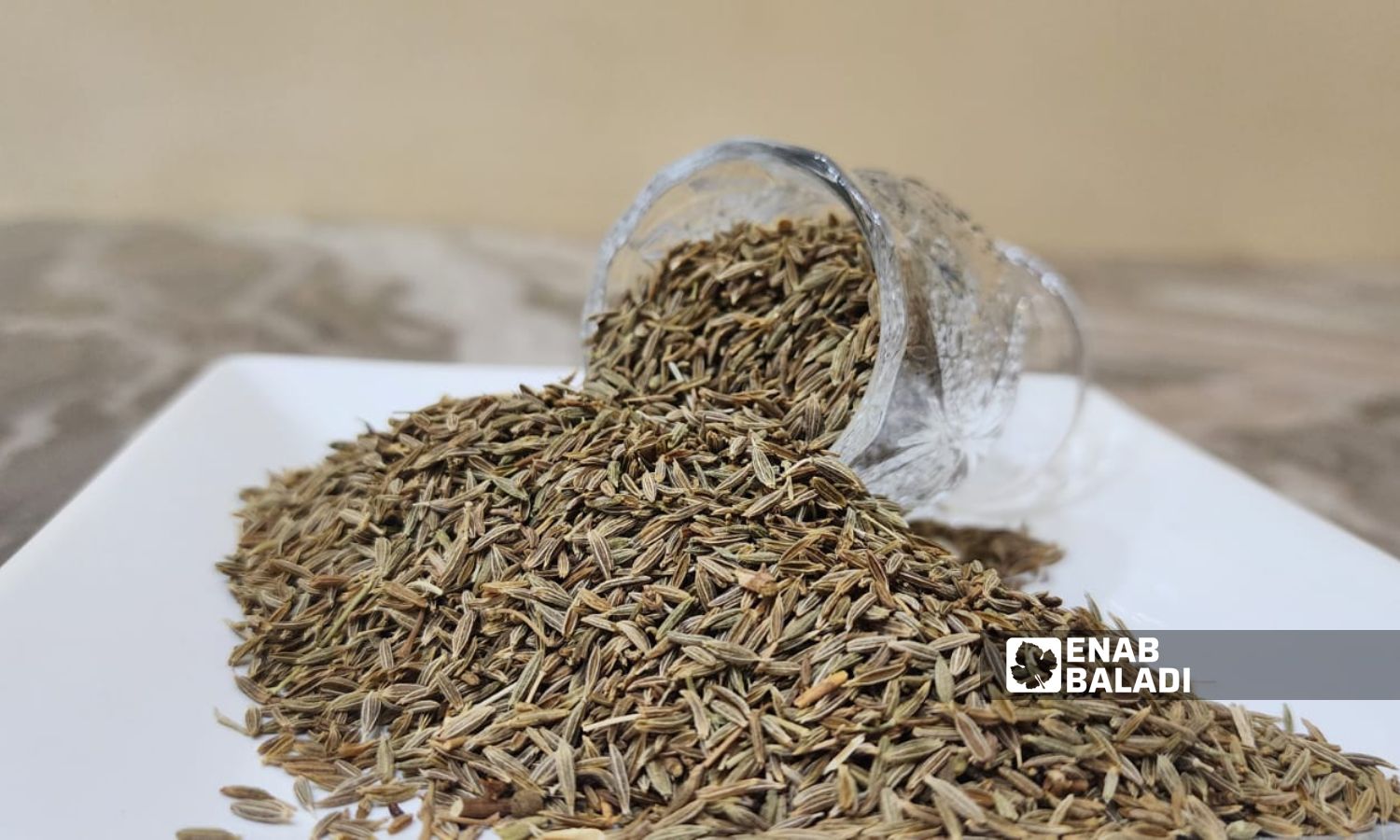



Azaz – Dayan Junpaz
Cumin farmers in the northern and eastern rural areas of Aleppo suffered financial losses as a result of weather fluctuations and rainfall at the beginning of May, just 15 days before harvest.
Rains, floods, and soil erosion damaged dozens of agricultural projects, with cumin being the most affected because it is a “sensitive” crop that is influenced by any weather changes, according to farmers and an engineer interviewed by Enab Baladi.
Farmer Gaith al-Nasser told Enab Baladi that the yield from his ten-dunam cumin field in rural Aleppo has significantly decreased compared to last year. He added that the heavy rains and hail caused severe damage to the crop.
The farmer estimated his losses at about 50%, considering this acceptable compared to the losses of farmers with larger areas.
He explained that each hectare costs a farmer around $1,000, covering transportation, plowing, seeds, fertilizers, pesticides, labor, and irrigation.
Meanwhile, Mohammed al-Younis, also a farmer from the town of Kaljibrin in northern rural Aleppo, told Enab Baladi that most farmers have come to rely on cumin cultivation to achieve financial profits, and they did not expect to face such weather fluctuations.
Al-Younis said he planted 25 dunams of cumin, but the total yield ended up being only 350 kilograms after harvesting and sifting. He noted that he planted the same area in 2023 and harvested about two tons of cumin.
The farmer mentioned that the price of cumin has not been determined yet for this year, while in 2023, the price of a ton reached $7,000.
Cumin is a common crop in the rural areas of Aleppo, although it is grown less frequently compared to wheat and barley. It has seen increased cultivation in recent years with the hope of achieving better financial returns.
Agricultural engineer Ghassan Abboud told Enab Baladi that weather conditions, heavy rains, and high humidity levels contributed to the fungal diseases affecting the cumin crop, leading to significant production losses this year.
He added that choosing suitable land is crucial for the successful cultivation of this crop, which requires fertile soil with good drainage that is free of disease-causing agents, especially fungi.
The engineer pointed out that most lands in the rural areas of Aleppo are suitable for cumin cultivation, except for those suffering from poor drainage and prolonged water accumulation, where cumin farming is unfeasible and causes significant losses for farmers.
There is no precise statistic on the area of land planted with cumin this year in the northern and eastern rural areas of Aleppo, where the Syrian Interim Government (SIG) controls, nor an estimate of the production due to crop damage and the absence of cumin in markets, according to Hassan al-Hassan, head of the agriculture office in the Interim Government.
The past three years have seen the introduction of new and unconventional crops to northern Syria, breaking the mold of traditional farming among farmers in an effort to achieve higher returns amid deteriorating economic and living conditions.
Among the latest crops that have emerged in the north are saffron, sage, rosemary, and other aromatic medicinal crops.
if you think the article contain wrong information or you have additional details Send Correction